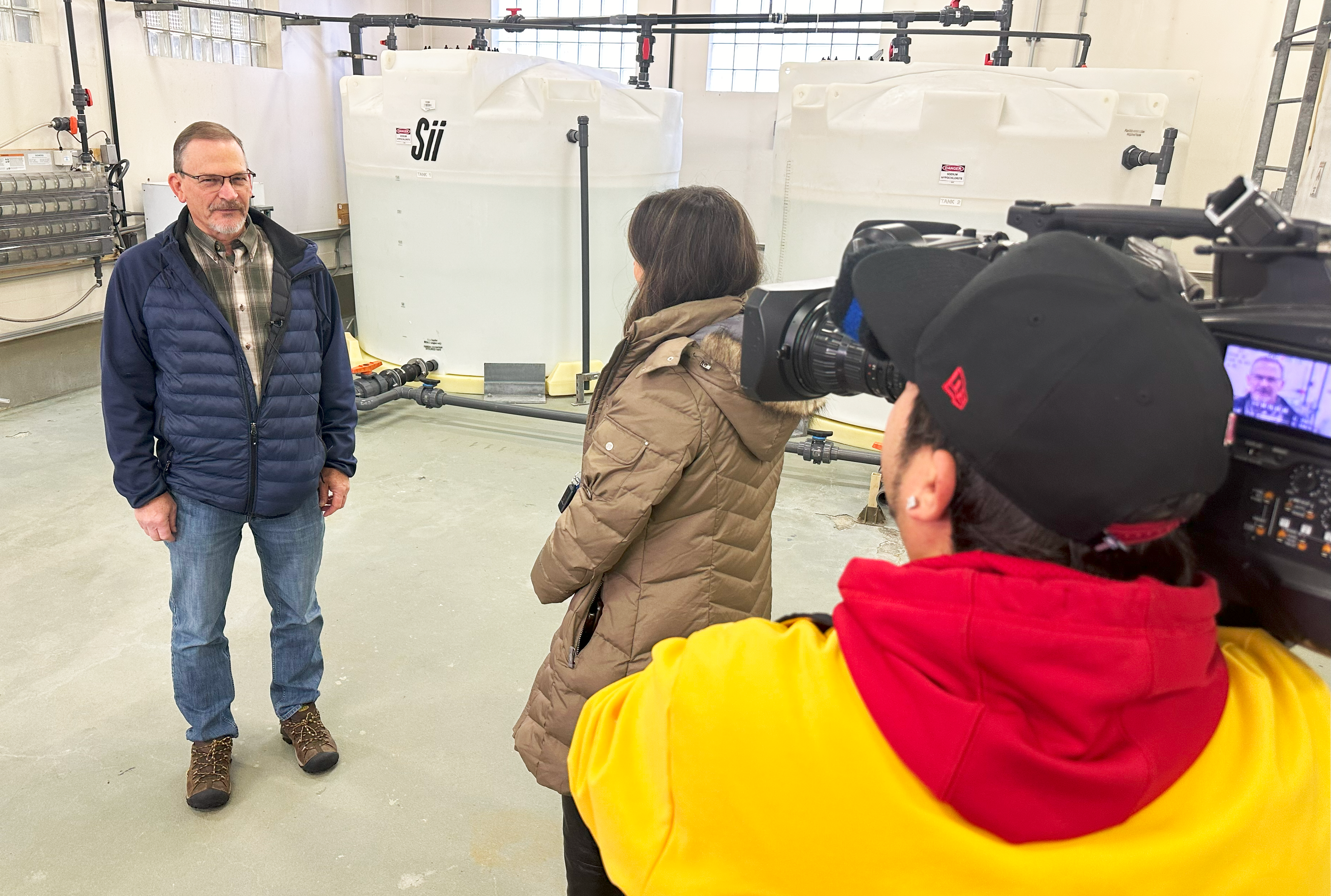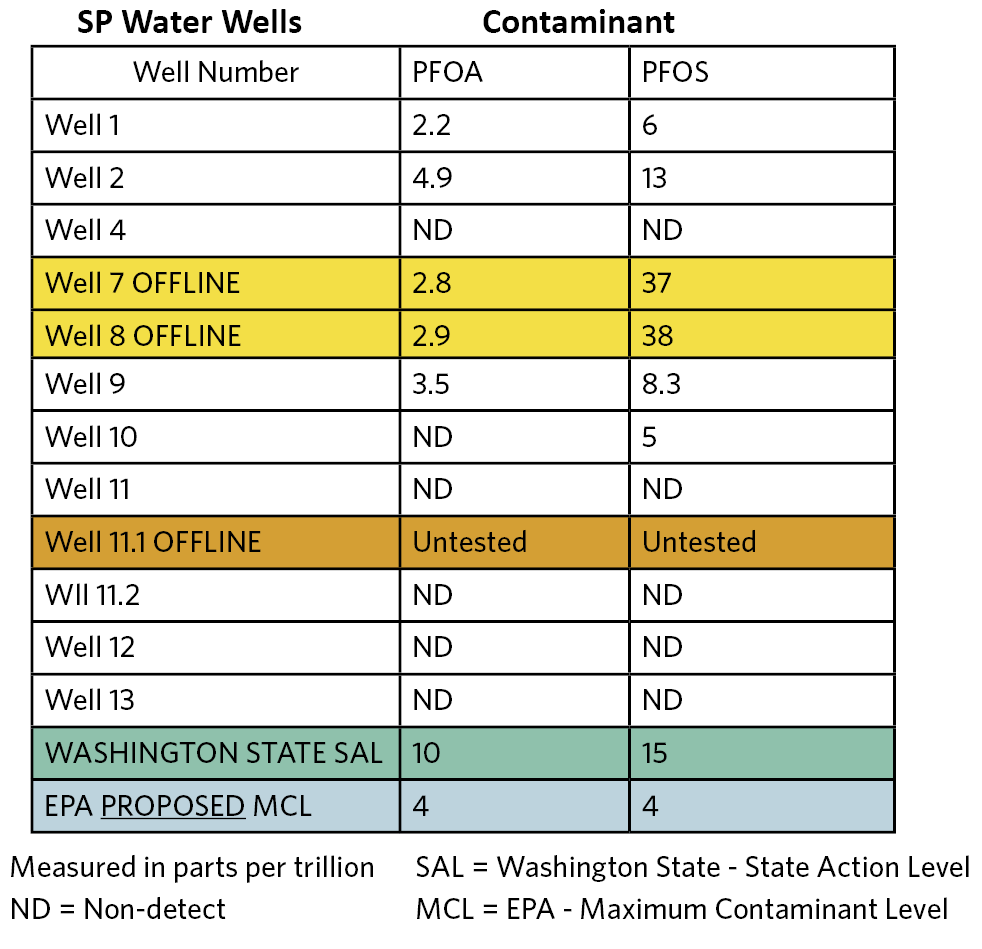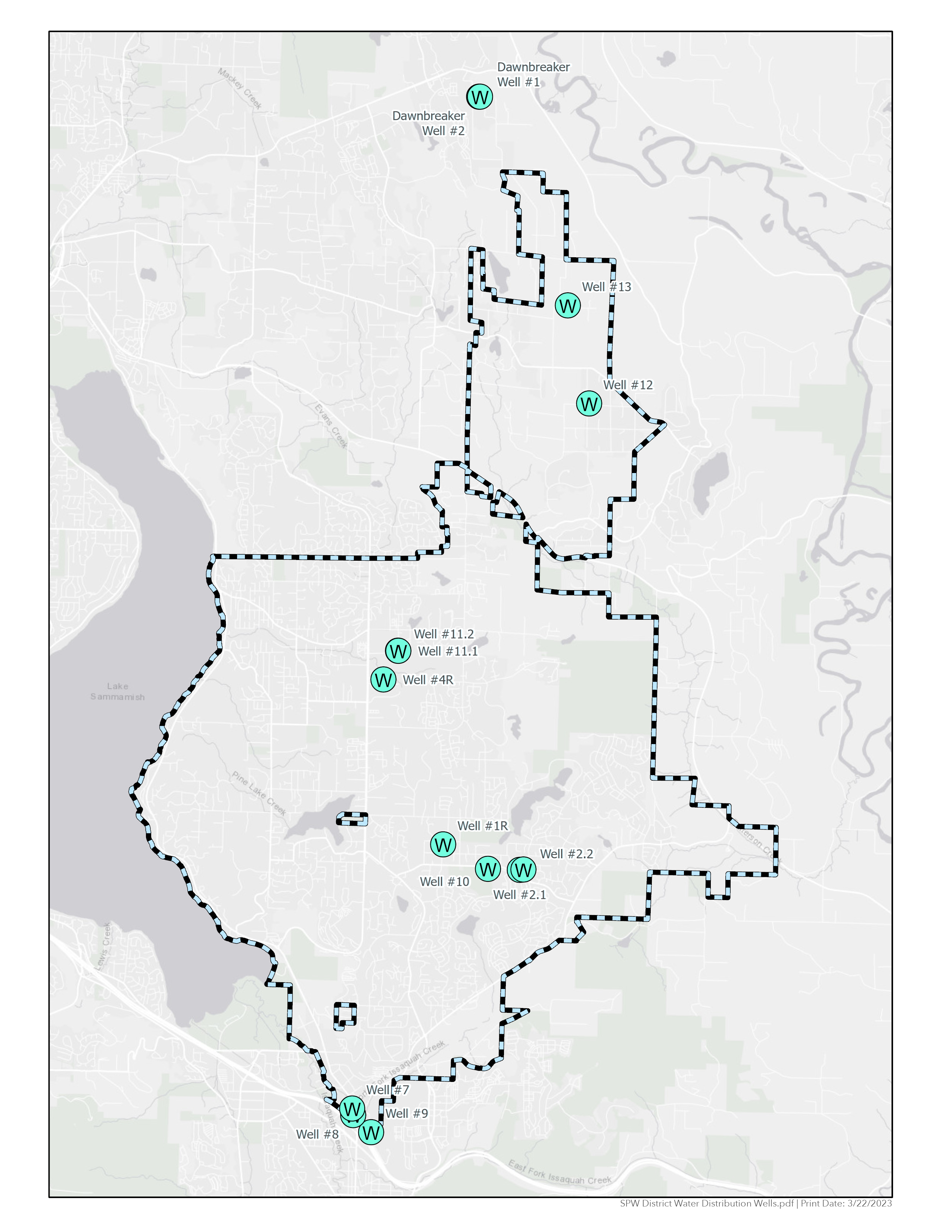
LET'S GET CLEAR ABOUT PFAS
Welcome to the “Let’s Talk about Our Water” page which is dedicated to our frank and open approach to the most pressing water quality issue in the United States – PFAS. The U.S. Environmental Protection Agency and other agencies have determined that exposure to PFAS creates health risks.
We are exposed to it in scores of household, commercial and construction products and water.
PFAS is in some water in the Sammamish Plateau Water District (the District) and the District is complying with all PFAS regulations. One significant source of the PFAS in the District’s wells is likely a local fire-fighting training facility that used fire-fighting foam containing PFAS.
The PFAS class of chemicals, belong to a large and complex group of so-called "forever chemicals" and are detected in water bodies, human bodies, and public drinking water systems in communities across the country and the globe.
The District Board of Commissioners adopted a District Approach to PFAS at an open public meeting on April 18, 2022. It is the guiding statement for every action we take.
The district has approved two additional water quality resolutions that address PFAS and other water quality issues.
Resolution 4912 - Revised Drinking Water Quality Policy Statement Click here
Resolution 5123 - Authorizing and Adopting District PFAS Approach Click here
We know a lot about PFAS and we want to share everything we know with you. Let's get right to it. SP Water General Manager Jay Krauss has become a PFAS subject matter expert. He has been at the forefront of the sprawling PFAS issue since it was discovered in some District water wells in 2015. Since then he has guided the District through challenging obstacles to put it on a healthy path to economic and environmental water treatment.
The SP Water 2024 Drinking Water Quality Report is out.
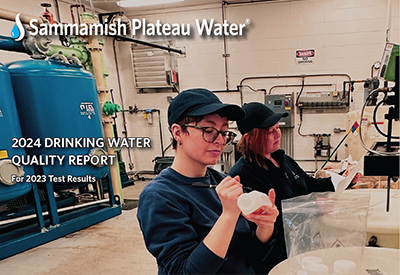
KING 5 NEWS STORY: On April 10, 2024, the US Environmental Protection Agency finalized its proposed PFAS regulations for drinking water. On that same day, KING 5 News requested an interview with SP Water General Manager Jay Krauss. The following story aired that evening and is a good summary of the many actions the district has taken since PFAS was discovered in some District water wells.
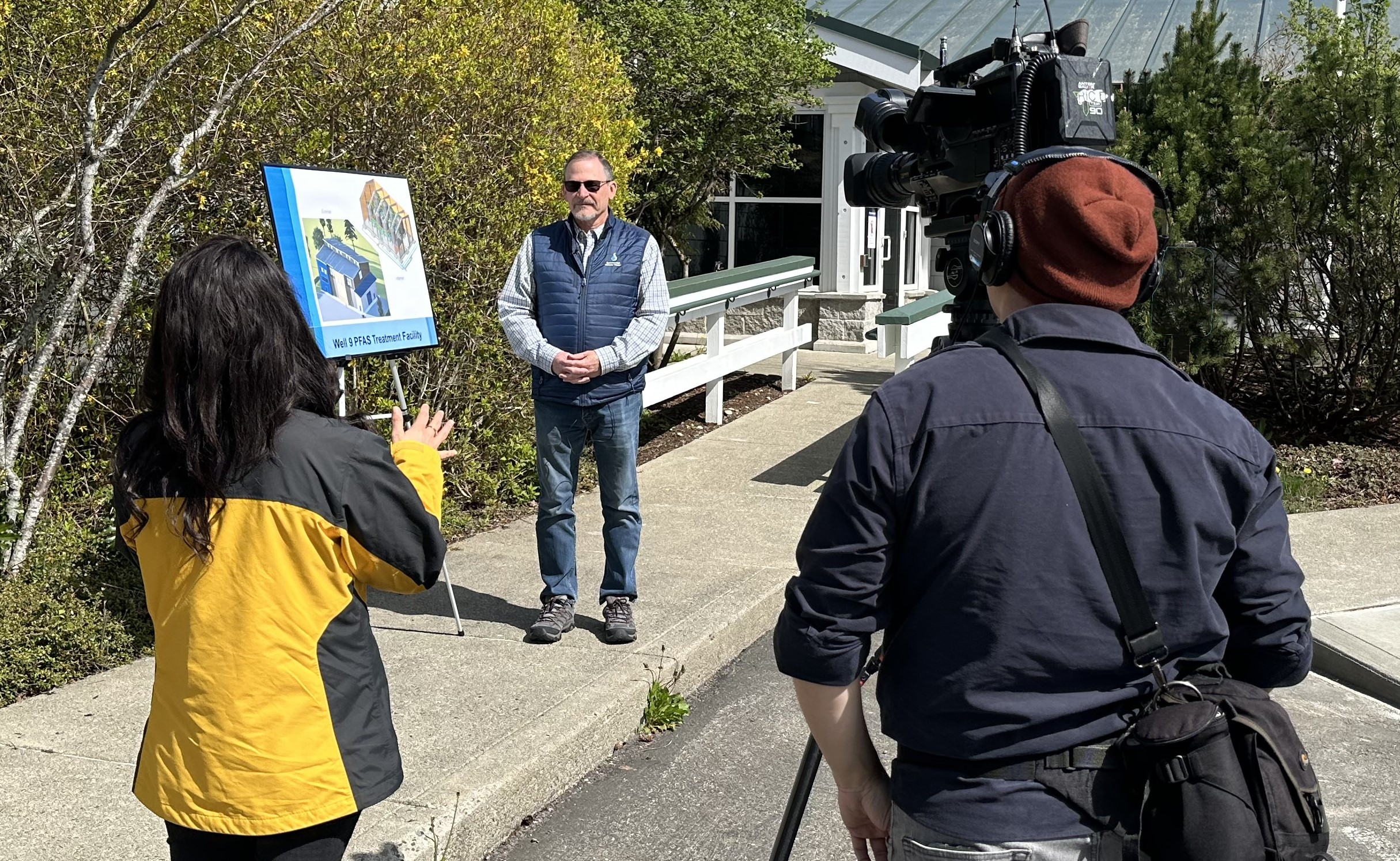
KING 5 NEWS Interview: SP Water General Manager Jay Krauss has become a PFAS subject matter expert. He has been at the forefront of the sprawling PFAS issue since it was discovered in some District water wells in 2015. Since then, he has guided the District through challenging obstacles to put it on a solid path to healthy water treatment in the most economic and environmentally responsible way. In this interview he discusses how water providers are left with a problem they did not cause, but must solve. Click Here.
State awards $7,857,000 in grant money to Sammamish Plateau Water for PFAS removal
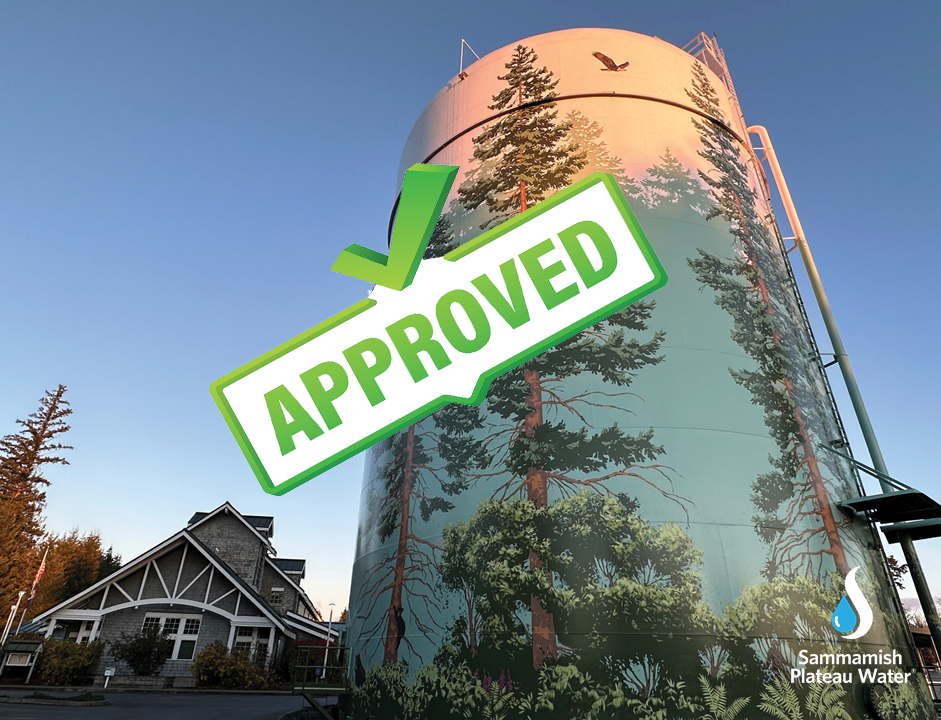
Sammamish Plateau Water and Sewer District (the District) is using grant money for design and construction of a state of the art water treatment facility to treat PFAS which are also known as “forever chemicals” in some Sammamish Plateau Water wells. We appreciate your patience as the District has taken several aggressive steps to protect your drinking water since the discovery of PFAS in some District water wells.
Wells with the highest PFAS levels were immediately removed from service as soon as elevated PFAS levels were detected in 2017. Since that time the District has been in compliance with all Washington State Health Department standards.
Now, we have exciting news. The District’s grant applications resulted in a state grant of nearly $7,857,000 along with $1,585,000 million in a federal grant. That money will be used to design and construct a water treatment facility to remove PFAS from impacted wells and minimize customer rate increases.
New technology allows for removal of the PFAS suite of chemicals that are resistant to existing treatment techniques. The new facility will remove PFAS to non-detectable levels.
Construction will begin as soon as state and federal agencies approve the grant agreement. In the meantime, the District will continue to meet all established standards to ensure safe drinking water.
The District did not cause the PFAS contamination. The most likely source was seepage of firefighting foam used at a nearby training facility. The District is committed to meeting all drinking water standards.
King County files its own lawsuit against PFAS manufacturers for damage caused by toxic 'forever chemicals'
https://kingcounty.gov/elected/executive/constantine/news/release/2023/June/02-PFAS-Federal-Lawsuit.aspx
The Washington State Attorney General has filed a lawsuit against PFAS manufacturers. This is separate from the lawsuit filed on behalf of SP Water and other plaintiffs against some of those same manufacturers. Click here to view Attorney General’s lawsuit:
https://www.atg.wa.gov/news/news-releases/ag-ferguson-files-lawsuit-against-20-manufacturers-forever-chemicals
How are other parts of the country dealing with this problem?
EPA Announces Proposed PFAS MCLs for Drinking Water
On March 14, 2023, The Environmental Protection Agency (EPA) announced the first proposed national limits of 4 parts per trillion (ppt) for two types of PFAS in drinking water. Upon adoption, the District will respond accordingly.
The EPA says 4 ppt is the lowest concentration that laboratories can reliably measure for PFOA and PFOS. This finally provides a preliminary guidance for drinking water utilities like Sammamish Plateau Water to use in demonstrating compliance with the proposed enforceable maximum contaminant levels (MCLs).
If finalized, the 4 ppt MCLs would be lower than the State Action Levels set in Washington State. EPA also proposed a strategy to limit four additional types of PFAS based on water concentration limits for each of the four PFAS.
READ MORE HERE
EPA Proposed National Primary Drinking Water Regulations (NPDWR)
This EPA table establishes legally enforceable levels, called Maximum Contaminant Levels (MCLs), for six PFAS in drinking water - PFOA and PFOS as individual contaminants, and PFHxS, PFNA, PFBS, and HFPO-DA (commonly referred to as GenX Chemicals) as a PFAS mixture. EPA is also proposing health-based, non-enforceable Maximum Contaminant Level Goals (MCLGs) for these six PFAS.
| Compound | Proposed MCLG | Proposed MCL (enforceable Levels) |
|---|---|---|
| PFOA | Zero | 4.0 parts per trillion (also expressed as ng/L) |
| PFOS | Zero | 4.0 ppt |
| PFNA | 1.0 (unitless) Hazard Index |
1.0 (unitless) Hazard Index |
| PFHxS | ||
| PFBS | ||
| HFPO-DA (commonly referred to as GenX Chemicals |
NOTE: All SP Water provided to customers was in compliance with the existing state levels. As the table below shows, the new EPA MCLs will change the standards the district must meet.
| Compound | EPA Proposed MCL |
Highest SP Water Levels |
PFOA |
4 |
4.9 |
PFOS |
4 |
13 |
PFNA |
|
|
PFHxS |
||
| PFBS | ||
HFPO-DA (commonly referred to as GenX ChemicalS) |
Highest SP Water levels are based on monthly surveys and do not reflect much lower levels in individual wells.
Here are individual well testing reports compared to current Washington State Action Levels (SAL) and EPA proposed Maximum Contaminant Levels (MCL). Well numbers 7 & 8 were taken offline in 2017 after recording listed elevated levels.
What are we going to do about it?
Our goal has always been for zero PFAS detected in all our water sources. The District is pursuing funding from both the State Departments of Ecology and Health to pay for a water treatment plant capable of reducing PFAS to non-detect levels.
Current estimates are that the new facilities will cost $36 million to $40 million dollars. The District has secured $1.58 million in funding in support of the project through Congressionally Directed Spending.
The district has unsuccessfully applied for several state funding opportunities. The District is under current consideration for a state budget request which may be our last opportunity.
The District has applied to the Washington Department of Ecology’s Remedial Action Grant Program for a grant to cover the currently unfunded balance of the treatment project. In addition, the recent federal Infrastructure Investment & Jobs Act (IIJA) included significant potential funding for water systems, including PFAS treatment. These IIJA funds will be distributed at the state level through the Department of Health Office of Drinking Water (WDOH).
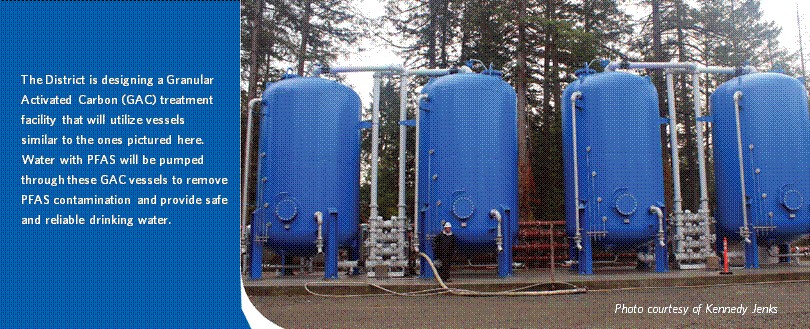
What have we done so far?
• The District has secured federal and state grants totaling more than $9.4 million dollars for design and construction of two PFAS treatment facilities.
• The District engaged with an environmental attorney and initiated a lawsuit against 3M Company, E.I. DuPont de Nemours, Inc., and other primary PFAS and PFAS-containing firefighting foam manufacturers for their involvement in the manufacture, promotion, and sale of the chemicals.
• The District presents information about PFAS and Arsenic in the Consumer Confidence Report which is sent out annually.
• The District engaged with state staff and elected officials for relief from a problem we did not cause.
• The District continually updates websites and social posts regarding PFAS information and ongoing District efforts.
• The District has a testing plan for PFAS. Monthly sampling is done for all wells that have detects of PFAS. All other sources of the District water supply are tested twice a year.
• The District interacts with customers and shares data as requested on a regular basis.
• We removed from production two wells with the highest PFAS concentrations; Wells 7 and 8, immediately after tests found elevated PFAS levels.
How did we get here?
Let's start at the beginning. in 2015 The District monitored for PFOA and PFOS as part of the US Environmental Protection Agency’s (USEPA) Unregulated Contaminants Monitoring Rule (UCMR3) used to collect data for contaminants of emerging concern that are suspected to be present in drinking water and do not yet have health-based standards set under the Safe Drinking Water Act. All results from the District’s 2015 tests were below the UCMR3 minimum reporting limit and reported as non-detect.
From this moment, The District took this issue head on, demanding answers but not waiting for them. The District is a leader among water providers in investigating solutions to this nationwide problem.
• (May, 2016) The District proactively conducted more tests and detected PFAS in Wells 7, 8, and 9 in the Lower Issaquah Valley Aquifer. The PFAS detected did not exceed the USEPA’s combined health advisory levels for PFOS and PFOA at that time.
• (June, 2016) The District retained expert consultants to develop continuous and intensive monitoring/testing programs, a three-dimensional groundwater model, and Interim Monitoring and Response Plan for Perfluorinated Compounds.
• (September, 2016) The PFAS detected in the Lower Issaquah Valley Aquifer was attributed to the use of firefighting foam in fire training exercises originating within the City of Issaquah. This led to an environmental study by the City of Issaquah, Eastside Fire and Rescue, and the Washington State Department of Ecology in coordination with a third party consultant. The study took place August to October of 2018, and the final report was issued in March of 2019.
• (August, 2017) District Wells 7 and 8 were taken out of production as a precaution to minimize PFAS levels. Production was shifted to Well 9 because it had the lowest levels of PFAS.
• (August, 2017) The District secured a temporary water right to move production from Wells 7 and 8 to Well 9 in order to shift water production to the well with the lowest PFAS levels - Well 9.
• (September, 2017) The District increased the amount of regional supply purchased through Cascade Water Alliance and began blending groundwater from Well 9 with the regional water. This action allowed the District to reduce PFAS concentrations in drinking water to non-detect levels for a period of time until June of 2021.
• (May, 2018) The District’s Board of Commissioners adopted Resolution No. 4780 – Drinking Water Quality Policy Statement that outlines Board policy with respect to drinking water standards, groundwater and aquifer protection, and outreach and transparency.
• (May-September, 2019) The District worked with consultants on an in-depth PFAS removal treatment plant analysis. The analysis included evaluating PFAS treatment options, site-specific treatment feasibility, and costs associated with treatment versus the long-term purchase of regional water for continued blending.
• (November, 2019) The District’s Board of Commissioners adopted Resolution No. 4912 – Revised Drinking Water Quality Policy Statement that outlines Board policy with respect to drinking water standards, groundwater and aquifer protection, and outreach and transparency. This resolution rescinded Resolution 4780.
• (December, 2019) The District participated in the “informal comment” process and commented on the proposed WA DOH PFAS rules that include State Action Limits (SALs) for 5 contaminants and laboratory standards for Minimum Reporting Levels (MRL). The District’s comments were designed to ensure that regulators include actionable Maximum Contaminant Limits to bring certainty to proposed regulations.
• (July, 2020) The District engaged an engineering firm to design a water treatment plant to remove PFAS from Wells 7, 8 and 9. Currently, the District is at 90% design and awaiting responses from the City of Issaquah on development requirements. This, while awaiting regulatory direction.
• (November, 2020) The District submitted an application to the WA State Department of Ecology (DOE) to make the temporary water right combining production from Wells 7, 8, and 9 permanent.
• (March, 2021) The District applied for federal appropriation to help finance construction of the PFAS water treatment plant to remove PFAS from Wells 7, 8, and 9.
• (June , 2021) The temporary water right to combine production from Wells 7, 8 and 9 was approved and become permanent. This water right allows the District to draw water from Well 9, a well with lower levels of PFAS below the proposal state SAL’s. Wells 7 and 8 remain available to use in the event of an emergency.
• (June, 2021) The District received a tentative federal appropriation of $1.585 million to help finance construction of the PFAS water treatment plant to remove PFAS from Wells 7, 8, and 9.
• (July, 2021) As part of an internal investigative process, the District detected PFAS in Wells 1, 2, and 10 in the Plateau Aquifer. PFAS levels are below the existing USEPA health advisory level, and currently proposed State Action Limits.
• (July, 2021) The District engaged with an environmental attorney and initiated a lawsuit against 3M Company, E.I. DuPont de Nemours, Inc., and other primary PFAS manufacturers for their involvement in the manufacture, promotion, and sale of the chemical.
• (September, 2021) In response to detecting PFAS in the Plateau Aquifer, consultants finalized testing and monitoring plans for wells 1, 2 and 10 in two reports: “Recommendations for PFAS monitoring within the Plateau Aquifer II Wells” and “Corona Summary of SPWater PFAS Samples Plateau Investigation May-July 2021 Memo.”
• (September, 2021) The District provided comments on a revision of the proposed final WA DOH PFAS rule including DOH’s proposal to assign responsibility for investigating the source of PFAS contaminations and environmental analysis to water purveyors. While the District agrees that such investigations are important in developing long-term remedies, the District’s position is that water purveyors should not be required to bear the cost or responsibility for investigating the cause of PFAS contamination since water purveyors aren’t responsible for causing the PFAS contamination and need to dedicate resources to addressing PFAS that are detected in their water supplies now.
• The treatment plant for Wells 7, 8 and 9 is estimated to cost $18 million. Impact to ratepayers unknown at this time as the District is continuing to pursue grants and funding assistance in addition to the tentative federal appropriation of $1.585 million.
• (August, 2023) SP Water awarded a state grant of nearly $7,857,000 to be used for the design and construction of a new PFAS water treatment facility.
• (Ongoing) The District will continue to closely follow evolving state and federal regulatory developments to maintain compliance with all drinking water standards and requirements, and via litigation and legislative engagement will continue to do all that it can to ensure that those responsible for contaminating the groundwater are held accountable for remediating contamination.
• (Ongoing) The District advocates for groundwater interests and sustainability in land use and stormwater management by monitoring related legislative and regulatory activity, and providing input on that activity aimed at ensuring long-term protection.
The system isn’t broken
The District has been a responsible steward of this water resource for 75 years. From our start in 1948, we now serve an area of 29 square miles and provide clean, affordable drinking water to more than 54,000 people. We know water. We understand the delicate relationship between the aquifer and the quality of your water. We know the system and have invested customer resources solely toward the safe delivery of this resource for now and in the future. And we believe in looking for a solution that provides safe drinking water while cleaning the aquifer.
What Can You Do?
In the coming weeks, important decisions will be made. We hope that you will become better informed about this debate and participate in the conversation. You can email District commissioners watch this site each week for updates as the EPA and state finalize regulations and the district seeks funding and treatment solutions.
Sammamish Plateau Water and Sewer District Commissioners
The District has been an advocate for clean, sustainable water for over 75 years. Contact the Commissioners and let them know if you support their efforts.
For more information, call or email Gary Chittim, Communications & Outreach Coordinator/PIO:
206-641-1286
gary.chittim@spwater.org
District Commissioner Meetings—First, second and third Mondays at 3:30 pm.
1510 228th Ave SE, Sammamish, WA 98075
Commissioners
Nav Otal
Ryikah Hooshangi
Tom Harman
Mary Shustov
Lloyd Warren
Department of Ecology
See the Department of Ecology website for additional information.
Letters to the Editor
https://www.issaquahreporter.com/
Follow the conversation on Facebook
NextDoor
Sammamish Plateau Water and Sewer District


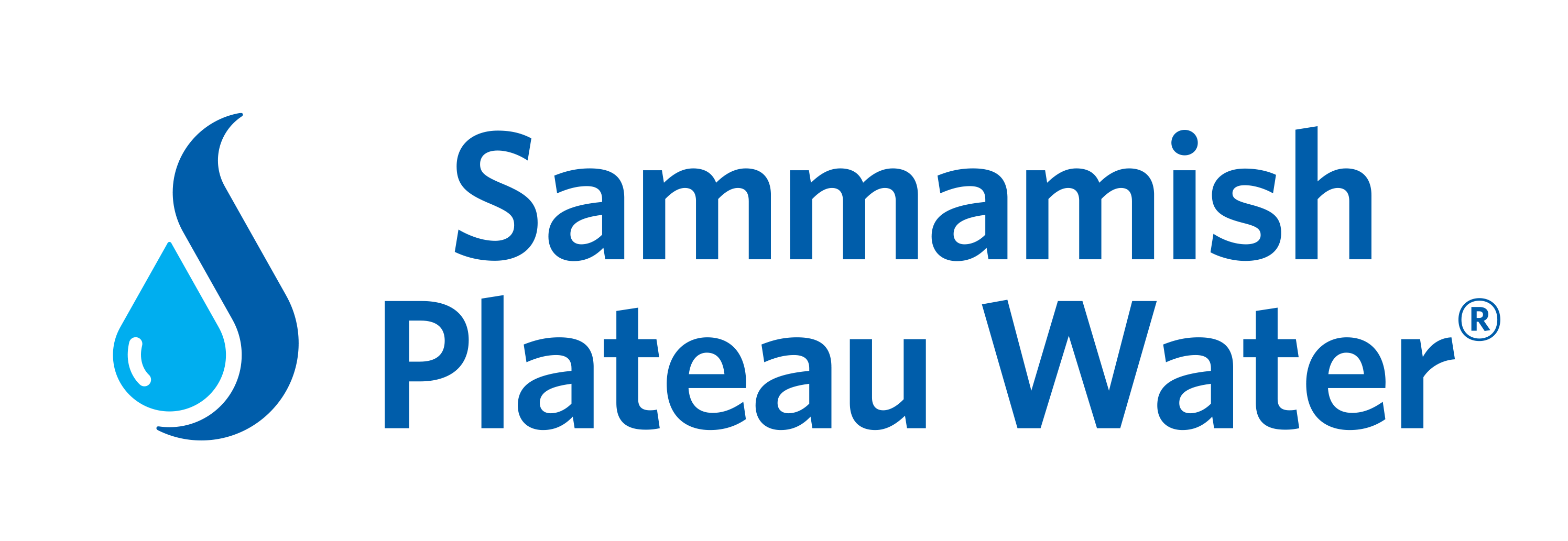

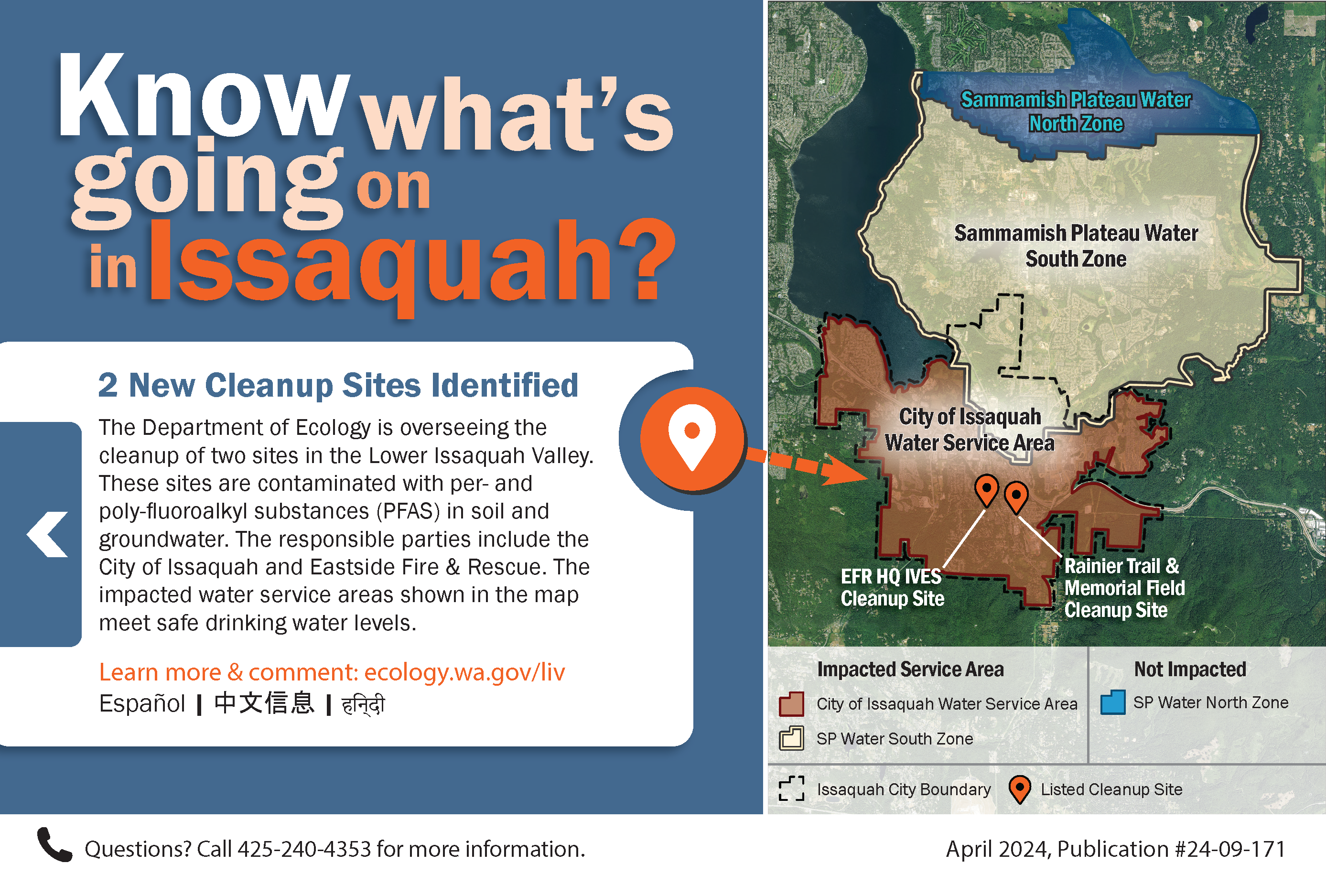
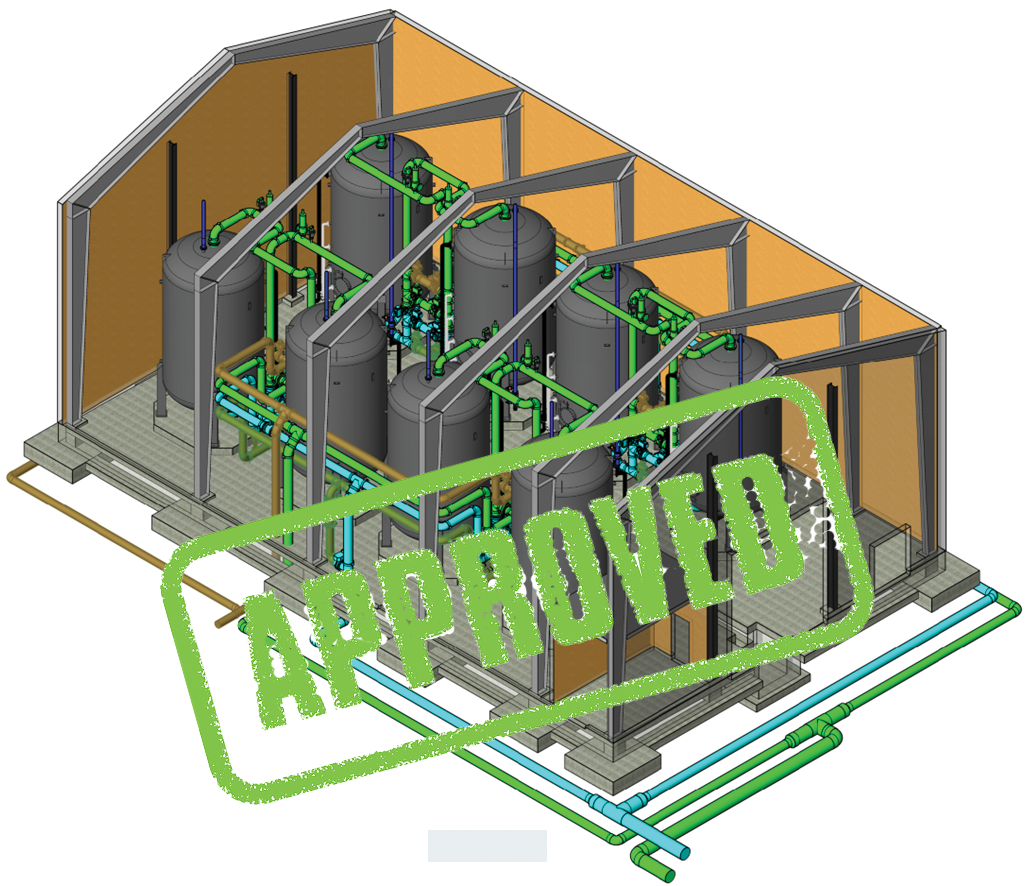
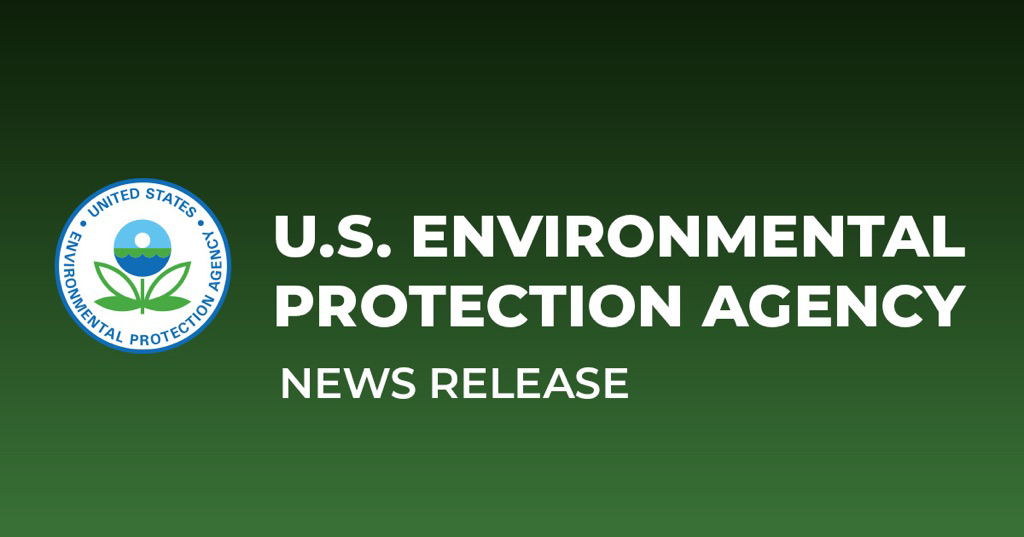
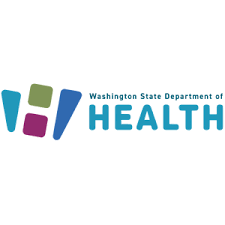


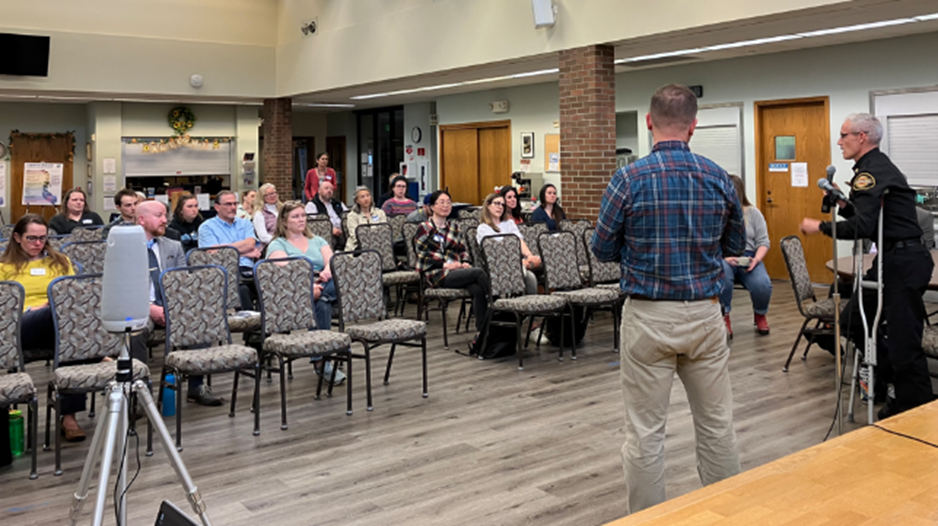
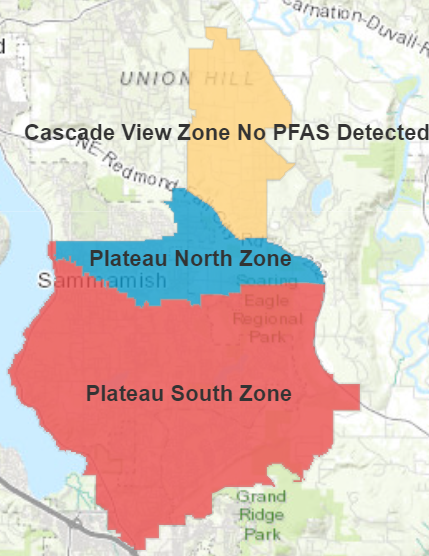
.png)

